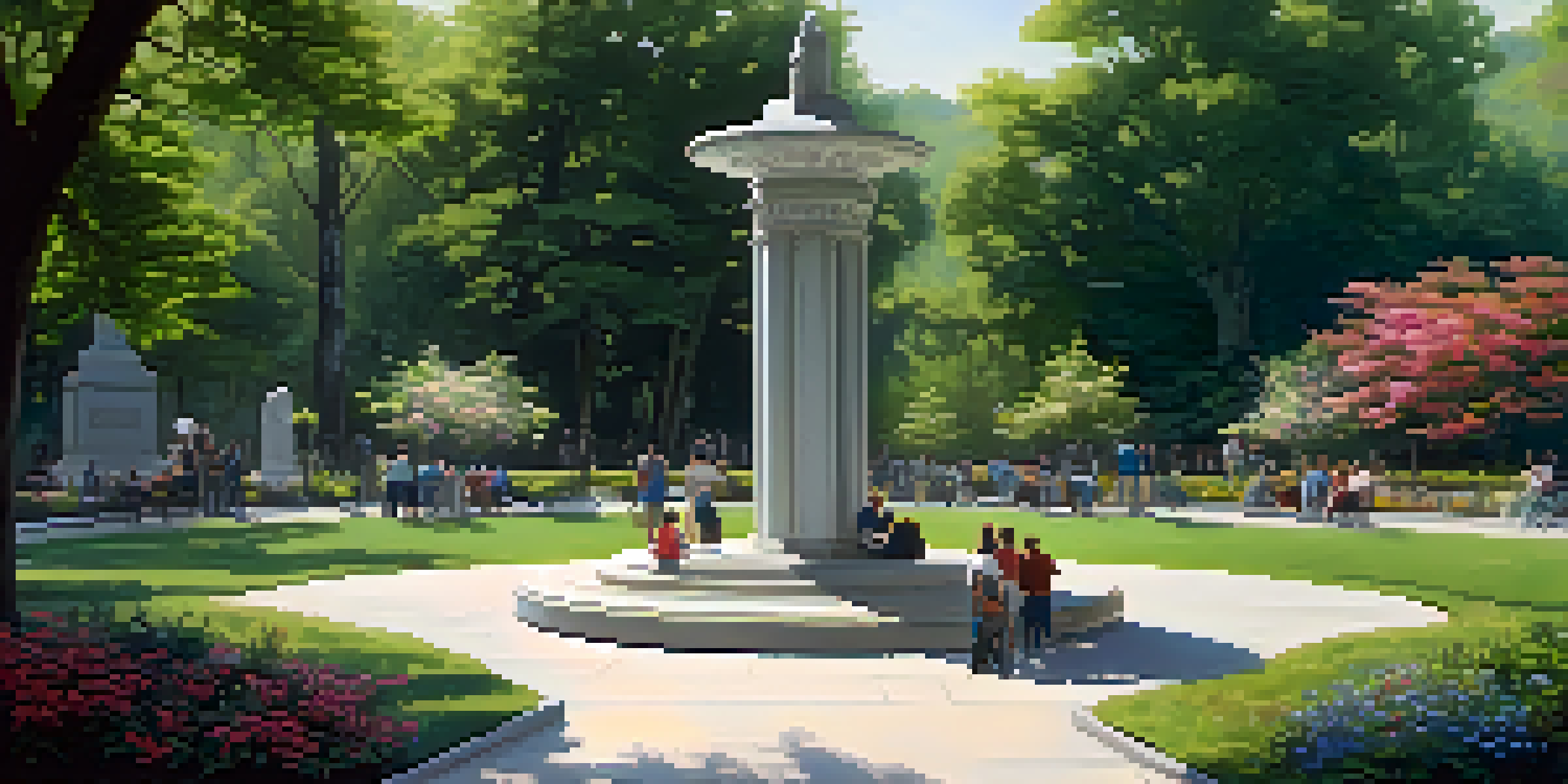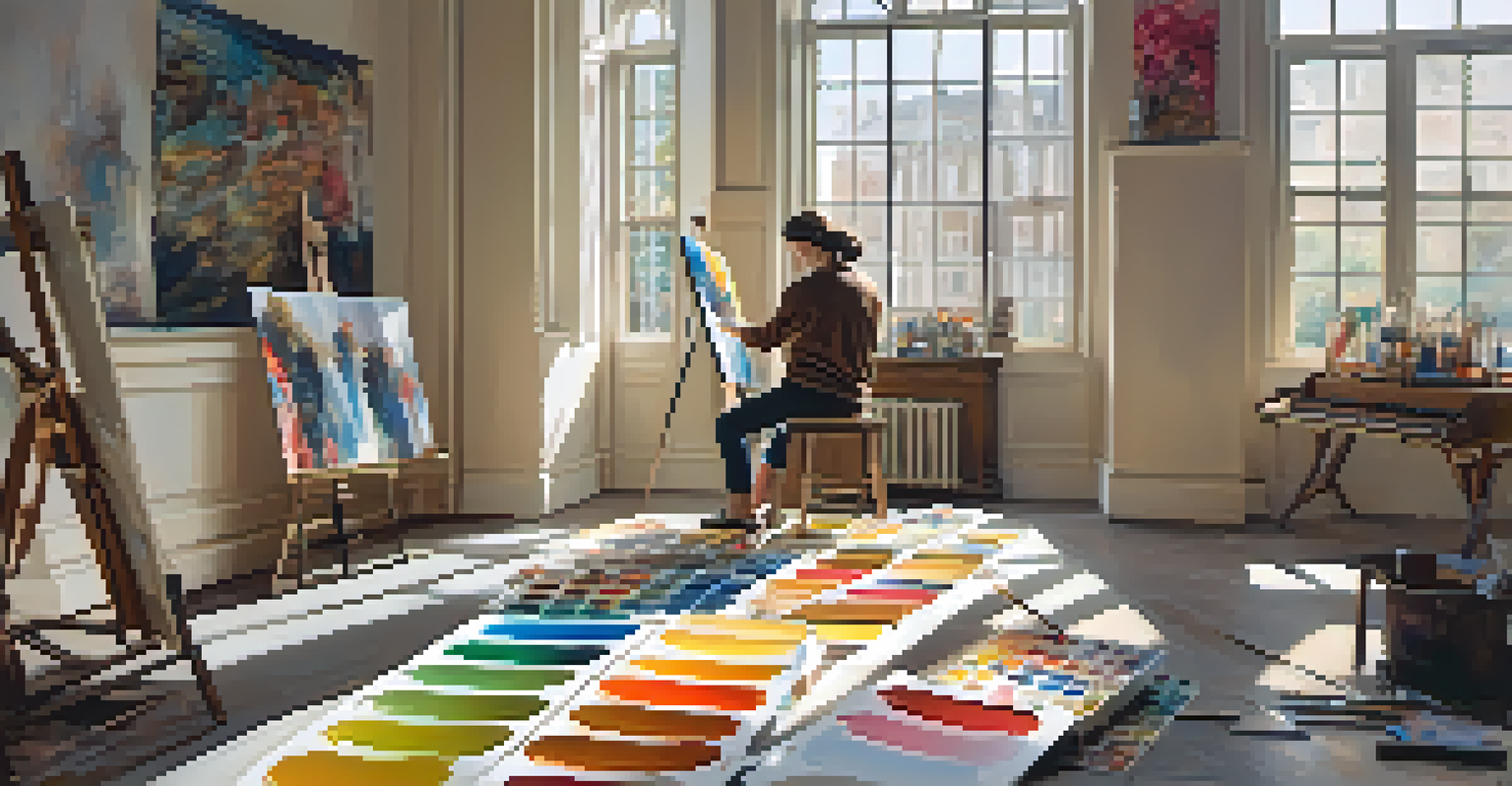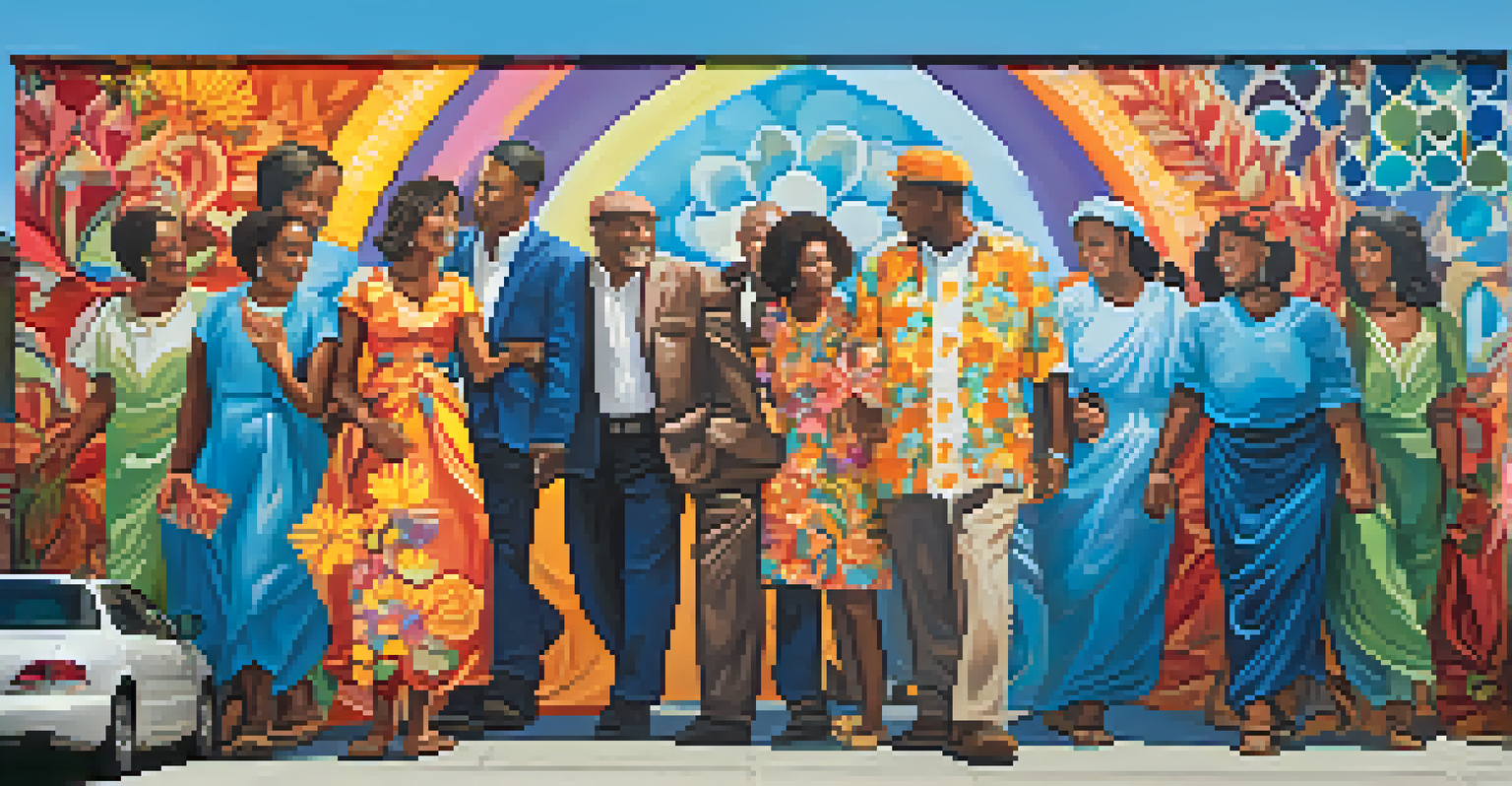Art as a Reflection of Societal Memory and Change

Understanding Art's Role in Society
Art has always served as a powerful mirror reflecting societal values and beliefs. From ancient cave paintings to modern street art, it captures the essence of human experience. This dynamic relationship between art and society not only preserves memories but also sparks conversations about change.
Art is the most beautiful of all lies.
When we look at a piece of art, we’re not just seeing colors or shapes; we’re peering into the historical context that shaped its creation. Artists often channel their surroundings, responding to cultural shifts, political upheaval, and social movements. By understanding this connection, we gain insight into the collective memory of a society.
Ultimately, art acts as a time capsule, preserving the emotions and thoughts of its era. It reminds us of where we came from, helping to shape our identity as a community. This interplay between past and present is crucial for understanding how societies evolve.
Art as a Document of Historical Events
Throughout history, art has documented significant events, serving as a visual record of human experience. Take Picasso's 'Guernica', for example; it powerfully depicts the horrors of war and its aftermath. Such works allow us to revisit historical moments, fostering empathy and understanding.

When artists create works based on real events, they are not just telling a story; they are engaging with the emotions that come with those moments. This deep emotional connection helps audiences relate to historical events on a personal level, making the past more accessible.
Art Reflects Society's Values
Art serves as a powerful mirror, capturing and preserving the societal values, beliefs, and experiences of its time.
Moreover, these artistic representations can challenge our perceptions of history. They encourage discussions about whose stories are told and whose are left out, prompting us to rethink our collective narrative. This reflection is essential for societal growth and change.
Art as a Catalyst for Social Change
One of the most powerful aspects of art is its ability to inspire change. Artists often use their platforms to address social issues, sparking movements and encouraging audiences to take action. Consider the impact of protest music during the civil rights movement; it united people and galvanized support for change.
Every artist dips his brush in his own soul, and paints his own nature into his pictures.
Through various mediums, artists challenge the status quo and provoke thought. They highlight injustices and call for action, making art a crucial tool for advocacy. This is evident in contemporary street art, which often tackles issues such as inequality and environmental concerns.
Art not only reflects societal problems but also envisions solutions. It can motivate individuals to reimagine their world and consider alternative paths forward. By engaging viewers in this way, art becomes a vital force for progress.
Cultural Identity and Artistic Expression
Art is a vital expression of cultural identity, allowing communities to share their unique stories and experiences. Each culture has its own artistic traditions, which serve as a means of storytelling and preserving heritage. This diversity enriches our global tapestry, offering different perspectives and insights.
When artists draw from their cultural backgrounds, they create works that resonate deeply within their communities. These pieces often address themes of belonging, memory, and resilience, connecting individuals to their roots. In this way, art becomes a vessel for cultural pride.
Art Drives Social Change
Artists utilize their work to challenge injustices and inspire movements, making art a crucial tool for advocacy and progress.
Moreover, sharing these cultural narratives through art fosters understanding and appreciation among different groups. It opens doors for dialogue, helping to bridge divides and promote inclusivity. Celebrating cultural expression through art can lead to greater harmony in society.
The Evolution of Art in Response to Technology
As technology evolves, so does the way we create and interact with art. Digital platforms have transformed traditional artistic practices, enabling artists to reach wider audiences. This shift not only changes the medium but also influences the messages conveyed through art.
For instance, social media has become a powerful tool for artists to share their work and connect with followers. This democratization of art allows for greater diversity in voices and perspectives. It also encourages rapid responses to current events, allowing art to reflect societal changes in real-time.
However, this technological evolution also raises questions about authenticity and the value of art. As we navigate this new landscape, it’s essential to consider how these changes impact our relationship with art and its role in society. A balance between tradition and innovation will be key.
Art and Memory: Preserving the Past
Art plays a crucial role in preserving collective memory, helping societies remember their past. Through paintings, sculptures, and installations, artists capture significant moments, allowing future generations to reflect on their history. This preservation is vital for understanding how we arrived at our current state.
Monuments and memorials serve as physical reminders of important events and figures, providing spaces for reflection. They invite communities to engage with their history, fostering a sense of belonging and identity. In this way, art becomes a bridge connecting us to our past.
Cultural Identity Through Art
Art expresses cultural identity, allowing communities to share their unique stories and foster understanding across diverse groups.
Moreover, the act of remembering through art can be healing. It allows individuals and communities to process trauma and celebrate resilience. By honoring our collective memory, we can move forward with a greater sense of purpose and understanding.
Looking Ahead: The Future of Art and Society
As we look to the future, the intersection of art and society will continue to evolve. The ongoing dialogue around social justice, climate change, and technology will influence artistic expression in profound ways. Artists will play a pivotal role in shaping our collective response to these challenges.
Emerging artists are already harnessing innovative techniques to address contemporary issues. From virtual reality to interactive installations, they are pushing the boundaries of creativity. This evolution invites audiences to engage in new ways, fostering deeper connections with art and its messages.

Ultimately, the future of art lies in its ability to adapt while remaining true to its core purpose: to reflect, inspire, and drive change. By embracing the dynamic relationship between art and society, we can look forward to a vibrant and transformative artistic landscape.